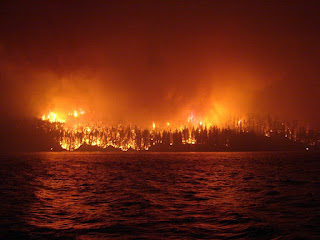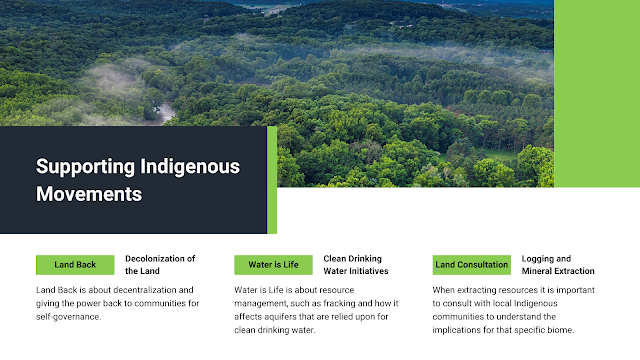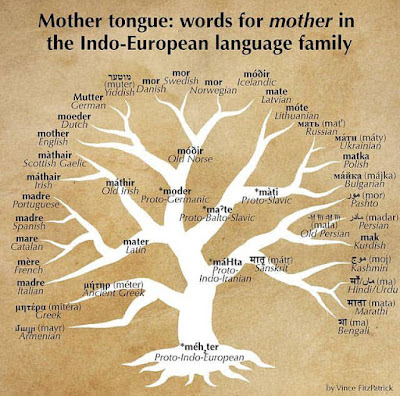
Welcome back to my blog series on the Forest Commons of Northern Europe and how they can inform modern Heathen practice. My focus in this blog is on Canada and the wide-reaching effects of the Enclosure Movement on colonization here, and how to move past that in a sensitive and informed manner. If you are not from Canada (or other post-colonial places globally) this may not apply to you, but I encourage you to read on anyways as it will perhaps help to inform why Heathenry is different between Europe and other places.
I am going to focus broadly on the Canadian landscape in this post, and then narrow to implications for Canadian Heathens in the next post, but I must still discuss the way modern Heathenry evolved differently in North America compared to Northern Europe. To that aim I will talk about:
- How Enclosure Movement and Industrial thinking shaped Colonization in Canada
- The pitfalls of blood-based ancestry
- Modern Heathenry in Canada and how it is is different from Northern Europe
- The importance of Land Stewardship and Allyship with Indigenous peoples
- How we can learn from history and find common ground with Indigenous People
- Moving past colonial ideas of land ownership and towards re-spiritualization of nature

As I talked about in the History of the Forest Commons, the inter-generational trauma of the Northern European peoples as they became severed from the land of their ancestors led to them inflicting violence on other landscapes and peoples around the globe. The Industrialization of Europe led to an even more rapid severing of land and people than previous generations had experienced. This was paired with the Cartesian Mindset, which allowed the natural world to be seen as soulless and therefore be commodified. This was also paired with the technological advances of the invention of steam power, which allowed for rapid travel and rapid depletion of resources in Northern Europe. The need for more resources and the ability for rapid travel led to the Age of “Discovery” and by extension, the colonization of places around the globe, including what is now called Canada. (Please note that the author does not support the Doctrine of Discovery or the genocide inflicted on the Indigenous peoples and landscapes of Canada, or elsewhere globally.)
At this point I have to bring up another cringy topic for the sake of the narrative. There is going to be a lot of that in this particular post, unfortunately, as it is needed to build a basis of understanding before we can move towards healing.
Status Cards by Alec Couros. Accessed on Flickr with Creative Commons attribution.
The Concept of Blood-Based Ancestry
As inclusive Canadian Heathens, we probably have a better than average understanding of the existence of the belief blood-based ancestry and its pitfalls. (This is also true of inclusive Heathens in other regions that were colonized.) For European Heathens, this is the part that will help explain to you why Heathenry outside of Europe is so different, but first I need to quickly explain what Heathenry and Inclusive Heathenry are, as this is now publicly on the internet and I am sure non-Heathens will stumble on it as well.
Heathenry is the belief in the Nordic gods, such as Thor, Odin, Freyja, etc. Heathen practice also includes ancestor veneration and the veneration of land spirits. Inclusive Heathenry is a modern term used by Heathens to signal that Heathenry is an open practice that anyone of any background can participate in if they feel called to. Basically, Inclusive Heathenry refutes the importance of blood-based ancestry to Heathen practice.
So what is blood-based ancestry? How did it originate in the Northern European landscape and how did that affect our interactions with Indigenous peoples in Canada and around the world?
The concept of blood-based ancestry originated in European Nationalism, which was an attempt by the ruling class to maintain control over the common people by giving them a new enemy (that wasn’t the ruling class). The common people of Northern Europe were disillusioned from losing connection to the land and their ancestors, so the elite fed it back to them in a new and corrupted form, Nationalism. Instead of identifying with family or community, the European common folk were urged to buy into a sense of belonging through a larger National identity. This kept the power with the state, instead of letting the common people take it back. It also created a new and terrifying face, racism based on skin colour.
Nationalism created a segregation in which ones own nation was greater than all others, and if your people were greater, then that meant other people were less… less than human. And under the Cartesian mindset if you were less than human, you were no longer a person, you were a commodity.
I am sure at this point your stomach is doing somersaults seeing where this is leading… colonization and genocide against Indigenous peoples. Not just Indigenous peoples either, any peoples who were seen as “other.” This also explains the slave trade and many other historic events. It explains it, but doesn’t excuse it.
Now you may try to argue that people have always been horrible to those who they thought of as “other” and to some extent that holds true. Slaves existed before the Trans-Atlantic slave trade. Different groups of people fought over land and resources and were generally not to kind to the losing party. What Nationalism allowed for was this sort of destructive behaviour on a larger scale than had ever been seen before in human history. Think about how much of the land mass of the world that the tiny British Isles “owned” in the form of colonies.
And the destruction of blood-based ancestry extended beyond just nationalism, racism, and colonization. The concept of blood-based ancestry is used to control Indigenous populations in Canada to this day. If you haven’t heard of blood quantum in determining status of First Nations peoples, that is a rabbit-hole you should probably explore. Put in the most basic terms if you aren’t “Indigenous enough” then the Canadian Government doesn’t have to count you as Indigenous and therefore does not grant you the same things other Indigenous people are entitled to under the treaties. Many things could change your status (and your childrens’ status) as a First Nations person in Canada historically, such has a woman marrying a non-Indigenous man, an Indigenous person leaving their reservation for work, or becoming a professional such as a doctor or lawyer, etc. And this was all true in terms of the legislation until very recently. This is all part of the legacy of colonization and the longterm cultural genocide that occurred in attempt to eradicate Indigenous peoples from the Canadian landscape.
For those of you outside of Canada, this is not ancient history. The last residential school in Canada closed in 1996, and many of the survivors of these schools that existed for the purpose of “taking the Indian out of the child” are still alive. (The incorrect use of the word “Indian” in Canada to describe Indigenous peoples still exists in the legislation today in the form of the Indian Act.)
As Heathens we need to be fully aware of blood-based ancestry and its effects on Indigenous peoples, but also on its continued effects in the Heathen community. Modern Heathenry has a sordid history that we cannot deny for the sake of ease within the narrative. Modern Heathenry was born out of the Nationalist Movement of Northern Europe as a way to reclaim a sense of identity. The first modern Heathens were Nationalists and many continue to be to this day. At its conception modern Heathenry othered people who were not of European descent. More recently the concept of Inclusive Heathenry emerged and arguably now the majority of Heathens identify as inclusive Heathens. This means we are trying to reclaim pre-Christian Northern European religion without being exclusionary.
There is value in modern Heathenry because it is a way of reconnecting with the land and our ancestors. This is necessary for decolonization of the Western mindset. Northern Europeans and people of Northern European descent need to go back to the trees to heal ourselves, because if we don’t then we will remain untethered from the land we live on and continue to wreak havoc on the natural world. A lot of people have been talking recently about the healing that needs occur in the Northern European mindset in order to turn things around globally. Tyson Yunkaporta is someone worth checking out if you haven’t already. He is an Indigenous Australian who has written the book Sand Talk and also hosts the podcast of the same name.
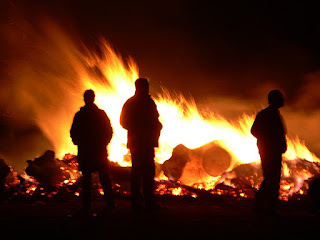
Valborgarmessa by Jonas Bengtsson. Accessed on Flickr through Creative Commons attribution.
"Tradition is not the worship of ashes, but the preservation of fire” - Gustav Mahler
Decolonization of the Western mindset is an ongoing process, and we need to heal ourselves in order to be able to relate to Indigenous peoples around the world and to the lands we live on. This is where the healing of this mindset differs between locations. Modern Heathens in Northern Europe are more easily able to reconnect to the land and the ancestors as they have not been displaced from their ancestral homes.
I know that Heathens in Northern Europe are also confused by the approach of modern Heathens in North America. We are criticized for how we place too much value on tracing back lineages to Northern Europe, while simultaneously being met with incredulity that we actually can trace our lineages back as many generations in name as some of us are able to. The reality is that blood-based ancestry held more value to people who had to relocate to North America or other places for their livelihoods, often against their will. The stories of ancestors and lineages are what kept them going in a strange land.
As much as blood-based ancestry was the cause of destruction and rupture, it is also what gave our ancestors a sense of purpose and a sense of belonging. It is from this complicated place that we are trying to emerge, remembering our roots, while slowly extracting ourselves from the layers of ideologies that harm us, our communities, and the world around us. This is especially tricky as we do not have the same connection to the land we live on that Heathens in Northern Europe can take for granted. We have to build something new in a new land, using pieces of old traditions, but that on its own is not enough to create a structure. We are rewriting Heathenry to fit the Canadian landscape, largely through trial and error.
Moving Towards Land Stewardship and Allyship with Indigenous Peoples
In order to better understand relations with the land, I want to create a bit of a thought experiment at this point. The idea is to imagine what Canada would be like if it had modern Forest Commons like those found in Northern Europe. The intention of this thought experiment is not any serious intent to create Forest Commons here, but rather as an attempt to decolonize our thinking by looking at how the Forest Commons benefit the people and the environment. From this we can hopefully identify what is lacking in our relationships to the land here in Canada, and how we can use this knowledge to ally with Indigenous peoples in their own initiatives to protect the land.
.png)
The Implications of Creating Canadian Forest Commons
The establishment of Forest Commons in Canada would give more opportunities for people to connect with the land, and take pride in maintaining this shared resource.
We do not have Right to Roam in Canada and so many people, especially living in cities, don’t feel connection to the land and therefore don’t recognize the importance of preserving the environment for our continued well-being. Very few Canadians are familiar with subsistence living and many don’t even fully understand where their food, and other resources, come from. Canadians, and in particular non-Indigenous Canadians, may not have familiarity with the land our its natural resources. We often don’t know the properties of different plants or the cycles of plants and animals in relation to the Canadian seasons. We are out of tune with nature. We don’t have the traditional knowledge that was passed down orally between Indigenous peoples of this land.
Decentralization of management of Crown Land would provide more opportunities for the well-being of all Canadians. This concept of everyone having an equitable share in common resources in order to satisfy needs is called a moral economy. In order for this to be successful we would need to relearn subsistence living and traditional skill sets. Learning about Honourable Harvest practices would help to inform Canadians about subsistence living, and maintaining the environment equitably for humans and non-humans alike.
We would also need to have legislation against the exploitation of natural resources for profit. Having smaller communities manage resources locally allows those most knowledgeable in that region to be able to make the decisions that will help sustain the natural environment. Shared interest in Land Stewardship would help us maintain biodiversity for generations to come.
We need to look to Indigenous people to learn the best ways to preserve the land for future generations.
Ashcroft Reserve wildfire - Look Lake, BC. Image by Shawn Cahill and accessed on Wikimedia through Creative Commons attribution.
Listening to Indigenous Knowledge Keepers
In learning from history we need to work with Indigenous people to help create sustainable practices in both Northern Europe and Canada.
In British Columbia where in some areas the Indigenous peoples would start controlled burns of forests historically. The government forbade this practice for many years and the results were disastrous. This caused layer upon layer of evergreen needles to compact on the forest floor, ready to ignite whole mountainsides with one spark and leading to years of forest fires faced by British Columbians, which threatened to take out whole communities. In addition, certain plants have adaptive traits to only propagate after a forest fire, meaning selective burning actually leads to greater biodiversity.
This is just one example of how Indigenous knowledge of the land is important to the well-being of all Canadians.
Learning From History
The history of colonization in Canada and past relationships with Indigenous peoples is sordid. In order to move forward we need to practice active listening in all dealings with Indigenous peoples to help to heal our shared history.
We also need to learn from what did and did not work in the Forest Commons in Northern Europe, as it helps us to create a cultural basis of understanding of the land and relationship to it. We can see that there is a need to share the land and not fight between ethnic groups over land usage rights. We also want to make sure the land that we aim to keep in Canada to avoid depletion of biodiversity is not the poorest land, or we perpetuate the problem. The way forward is grassroots inclusivity, and building community for the common good.
Finding Common Ground
This is an argument for using the Forest Common model to help relate with Indigenous peoples and to understand how land was used before the introduction of the Enclosure Movement. The history of the Forest Commons lets us think about how land usage can protect humans and non-humans through sustainability of natural resources. I think the Forest Commons can be used as a basis for understanding of the Land Back movement and what it is about. We need to inform ourselves on Indigenous movements and how we can be allies to help with Land Stewardship in Canada. I will post a bunch of links to more reading on this topic.


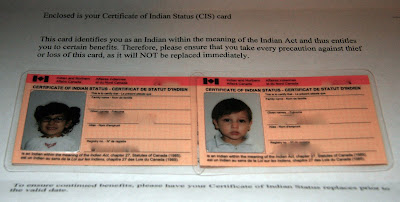

.png)
